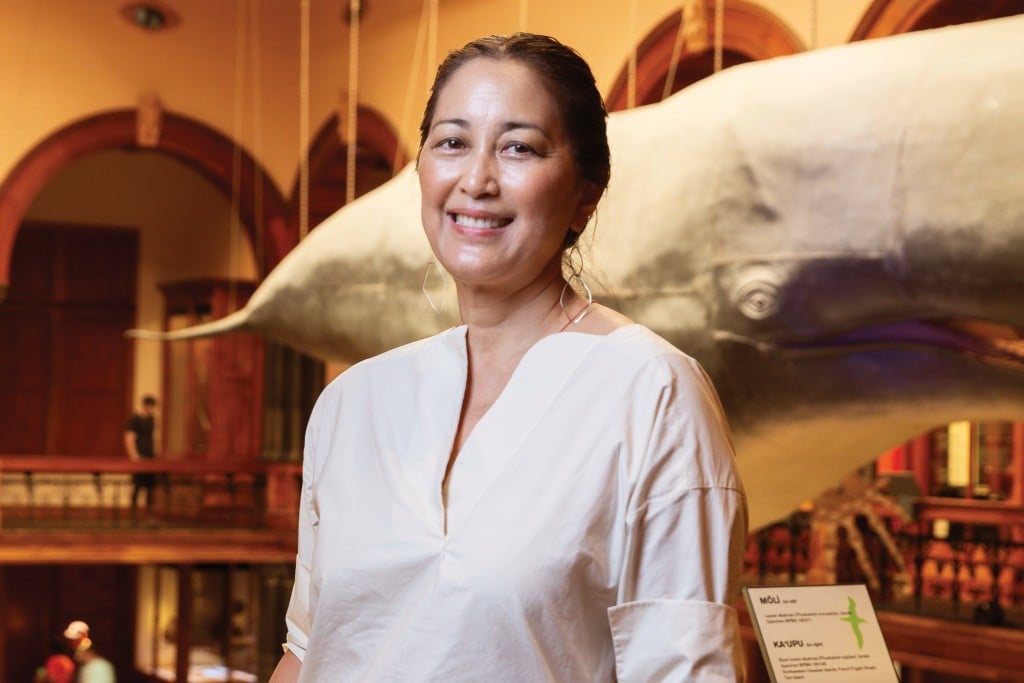Melanie Y. Ide, President and CEO, Bernice Pauahi Bishop Museum

Ide, who took the helm of the museum in January, wants to get the word out on what many researchers and other people-in-the-know believe: Bishop Museum is a world-class institution on par with more famous museums. She is itching to activate its untapped potential and pull back the curtain on resources that the general public has not fully experienced.
Ide: My work right now is about doing a whole lot of listening. It is a fruitful process because once you gather all of that information, you can synthesize it and organize it, make plans and move forward.
Q: What are you hearing?
Ide: I have learned people fundamentally want the same thing: They want their cultural heritage cared for. They want this to be the resource it already is – just more of it. More open. More accessible. A feeling that it is theirs.
Q: Where are the areas of untapped potential?
Ide: What people don’t know about Bishop Museum is that it is in the top 10 around the world, in the top five in this country and No. 1 in the Pacific in terms of its importance, its significance, its collection, its work. Relative to other museums, we fly under the general public’s radar.
Other institutions know Bishop really well because people who know, know how important it is. People who don’t know, don’t know. Only a small fraction of our stories have been told. So we are completely untapped, both in terms of materials and storytelling.
Q: What are some stories that have yet to be disseminated?
Ide: In addition to our superb collections, we have extraordinary researchers and practitioners who have a ton of material waiting to be shared. For instance, Dr. Jack Randall, an ichthyologist (fish expert) who is 93, is still working on his collection. He has identified more species than any other ichthyologist in history. In his last paper, he identified 37 species.
We have Dr. Richard Pyle, the foremost expert on deep-sea coral reefs, who continues to build on our impressive collection. He started coming to the museum when he was 13.
Then there is Dr. Norine Yeung, who knows everything about snails. She is the one who inspects the Christmas trees when they arrive in Hawaii to see whether they have invasive snails.
Q: Why is your research work important?
Ide: On the natural sciences front, the museum does the naming, keeping of numbers and locations of species – the baseline work. It is the building blocks of information that environmental scientists and agencies need to do their work. You take that data away, you don’t have baseline. It is hard for people to understand sometimes why we do this research, but it gives us a record of our world. What we are collecting today may be more important 50 years from now in being able to trace change. That data is what is kept here.
We were designated the state museum in 1988. We are also the repository for the Hawaii biological survey. We are the repository for every species and plant found in Hawaii. We are the only state that has this set up.
Q: What are the museum’s strengths and where is there room for improvement?
Ide: We have great anchor exhibits with our Hawaiian and Pacific halls. We can work to have stronger experiences in our natural sciences areas. We would like to expand our planetarium as well. We also have a huge opportunity and responsibility to restore Bishop Hall.
Q: How are you going to get the word out about the transformation?
Ide: We are going to need everybody’s help, which includes the state, the federal government, the county. On the private side, we want to build our partnerships and our memberships. On the grant-writing side, we will continue to be active. It is a struggle that all museums have and we just need to rise up and secure the future.
Q: Harnessing all the museum’s strengths seems obvious. Why wasn’t it done before?
Ide: Museums are complicated places with a lot of competing interests. If you look at the institutional history, there are people who might say: “We’re not going to be about research anymore, we’re going to be more public-facing. Or we have too many exhibitions; we need to be education-focused. Or wait, we have buildings to fix, so we can’t expand our collections.”
We have to recognize there is no either or. We have to do all of it. And it has to be done while being faithful to our values.
Q: Is the museum officially in a capital campaign?
Ide: We are in a place where we are organizing and gathering a lot of information. We are making plans and we are excited.
Q: What do you want to convey to the community?
Ide: That we want participation at every level. This museum belongs to everybody. We do need to make it more comfortable, make it a place for families to come and have kids play on the lawn. If you get the kids regularly coming to the museum when they are young, they will fall in love and keep on coming back.
This interview was edited for conciseness.






